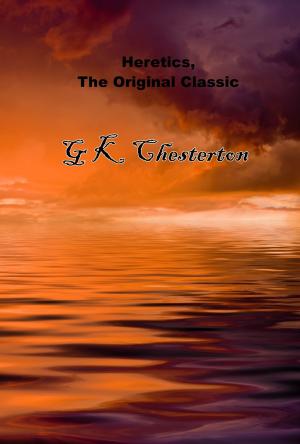| Author: | Elizabeth Gaskell | ISBN: | 1230000366786 |
| Publisher: | Starling and Black | Publication: | April 16, 2015 |
| Imprint: | Starling and Black | Language: | English |
| Author: | Elizabeth Gaskell |
| ISBN: | 1230000366786 |
| Publisher: | Starling and Black |
| Publication: | April 16, 2015 |
| Imprint: | Starling and Black |
| Language: | English |
On the north-eastern shores of England there is a town called Monkshaven, containing at the present day about fifteen thousand inhabitants. There were, however, but half the number at the end of the last century, and it was at that period that the events narrated in the following pages occurred.
Monkshaven was a name not unknown in the history of England, and traditions of its having been the landing-place of a throneless queen were current in the town. At that time there had been a fortified castle on the heights above it, the site of which was now occupied by a deserted manor-house; and at an even earlier date than the arrival of the queen and coeval with the most ancient remains of the castle, a great monastery had stood on those cliffs, overlooking the vast ocean that blended with the distant sky. Monkshaven itself was built by the side of the Dee, just where the river falls into the German Ocean. The principal street of the town ran parallel to the stream, and smaller lanes branched out of this, and straggled up the sides of the steep hill, between which and the river the houses were pent in. There was a bridge across the Dee, and consequently a Bridge Street running at right angles to the High Street; and on the south side of the stream there were a few houses of more pretension, around which lay gardens and fields. It was on this side of the town that the local aristocracy lived. And who were the great people of this small town? Not the younger branches of the county families that held hereditary state in their manor-houses on the wild bleak moors, that shut in Monkshaven almost as effectually on the land side as ever the waters did on the sea-board. No; these old families kept aloof from the unsavoury yet adventurous trade which brought wealth to generation after generation of certain families in Monkshaven.
On the north-eastern shores of England there is a town called Monkshaven, containing at the present day about fifteen thousand inhabitants. There were, however, but half the number at the end of the last century, and it was at that period that the events narrated in the following pages occurred.
Monkshaven was a name not unknown in the history of England, and traditions of its having been the landing-place of a throneless queen were current in the town. At that time there had been a fortified castle on the heights above it, the site of which was now occupied by a deserted manor-house; and at an even earlier date than the arrival of the queen and coeval with the most ancient remains of the castle, a great monastery had stood on those cliffs, overlooking the vast ocean that blended with the distant sky. Monkshaven itself was built by the side of the Dee, just where the river falls into the German Ocean. The principal street of the town ran parallel to the stream, and smaller lanes branched out of this, and straggled up the sides of the steep hill, between which and the river the houses were pent in. There was a bridge across the Dee, and consequently a Bridge Street running at right angles to the High Street; and on the south side of the stream there were a few houses of more pretension, around which lay gardens and fields. It was on this side of the town that the local aristocracy lived. And who were the great people of this small town? Not the younger branches of the county families that held hereditary state in their manor-houses on the wild bleak moors, that shut in Monkshaven almost as effectually on the land side as ever the waters did on the sea-board. No; these old families kept aloof from the unsavoury yet adventurous trade which brought wealth to generation after generation of certain families in Monkshaven.















